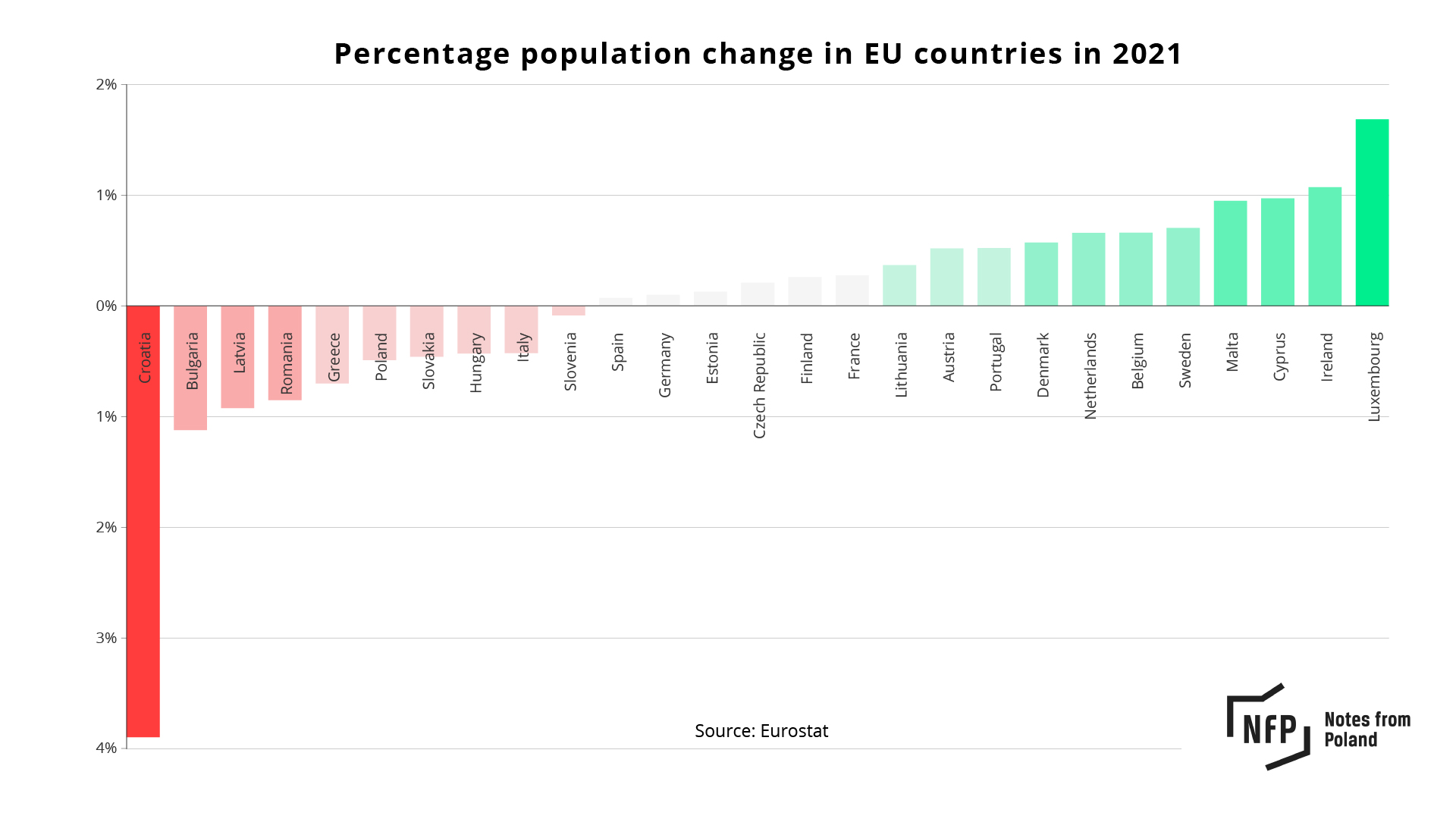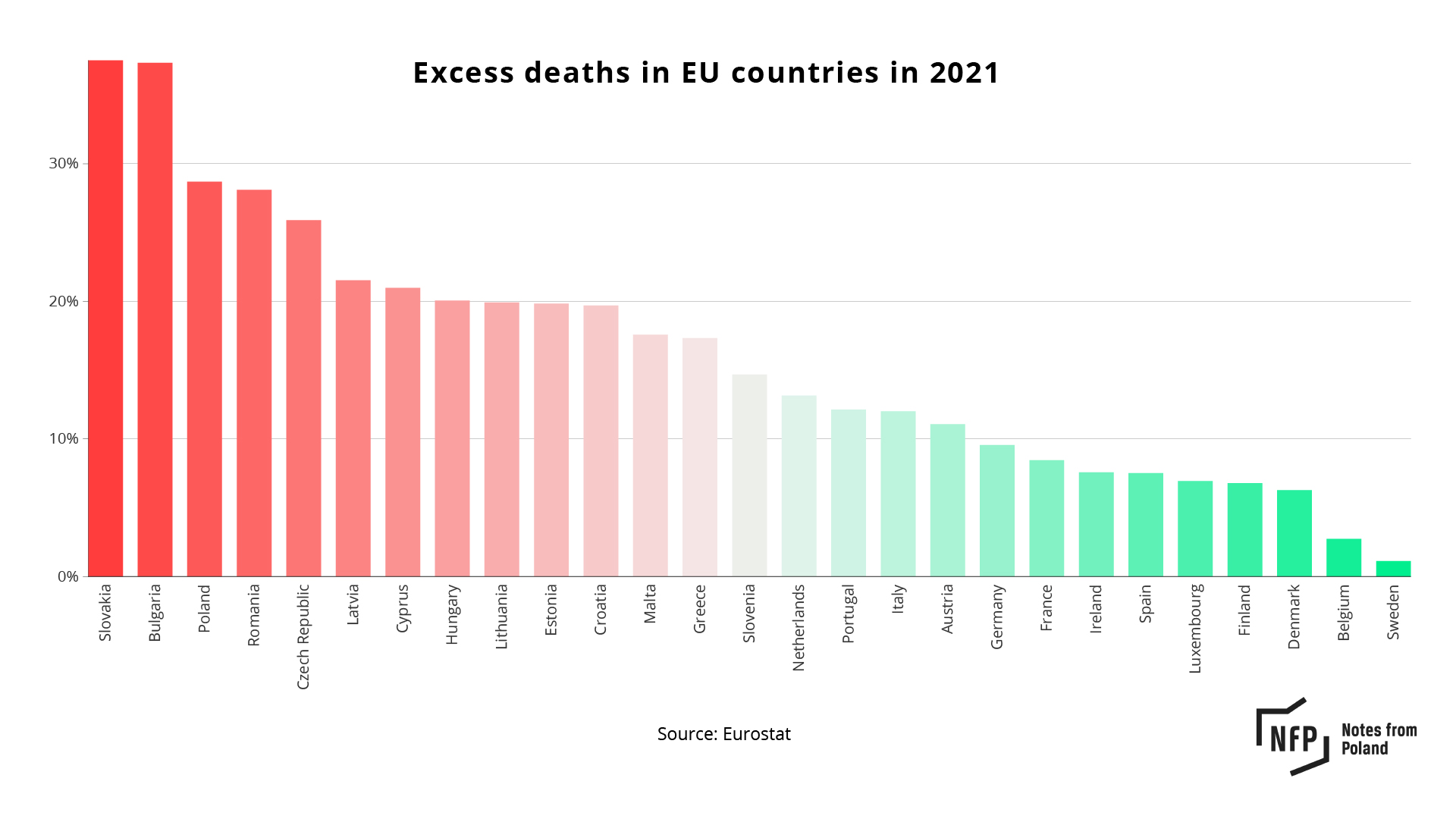Poland recorded the second-largest fall in population among all European Union member states last year. The country’s excess death rate of 29% was also the bloc’s third highest.
New data from Eurostat, the EU’s statistics agency show that in 2021 Poland recorded 520,000 deaths – its highest annual figure since World War Two – and only 332,000 live births, the lowest annual figure in that same period.
When also taking into account net migration, that resulted in Poland’s population falling by 185,800 in 2021. Only Italy, with a figure of 253,100, had a larger drop. By contrast, most member states saw a rise in population.

However, when looking at population change in relation to the overall size of the population – that is, by what percentage the population rose or fell – five countries saw a larger proportional decline than Poland’s 0.5%: Croatia (3.9%), Bulgaria (1.1%), Latvia (0.9%), Romania (0.9%) and Greece (0.7%).
At the other end of the scale, Luxembourg (1.7%), Ireland (1.1%), Cyprus (1.0%), Malta (0.9%) and Sweden (0.7%) saw the largest proportional rises in population.

Eurostat’s data also show that the number of deaths in Poland in 2021 was 29% higher than the average in the four years before the pandemic. That excess death rate was the third highest in the EU, behind only Slovakia (38%) and Bulgaria (37%). The lowest figures were in Sweden (1%), Belgium (3%) and Denmark (6%).
In 2020, Poland recorded the EU’s highest excess death rate of 20%. Experts have suggested that the high number of deaths during the pandemic is due to the overburdening of an already stretched public healthcare system and a relatively low Covid vaccination rate.

Demographers have long warned that Poland, like many other countries in Central and Eastern Europe, is facing long-term population decline and an ageing society. Preliminary data from last year’s national census also confirms that trend.
This week, Statistics Poland (GUS), a state agency, published forecasts based on UN data showing that, while the world’s population will increase from almost 8 billion today to 10.9 billion in 2100, Poland’s population will fall from 37.6 million to 23 million over the same period.
The Polish government has sought to tackle the country’s low birth rate through a series of “pro-family” social policies, including generous new child benefit payments. But such measures have so far failed to boost births.
Z okazji #ŚwiatowyDzieńLudności prezentujemy #PrognozaLudności #ONZ do 2100 r. Jest to z pewnością ciekawy materiał analityczny nie tylko dla demografów. #GUS #statystyki pic.twitter.com/P2FoTvkeNv
— GUS (@GUS_STAT) July 11, 2022
Main image credit: freestocks/Unsplash

Daniel Tilles is editor-in-chief of Notes from Poland. He has written on Polish affairs for a wide range of publications, including Foreign Policy, POLITICO Europe, EUobserver and Dziennik Gazeta Prawna.




















